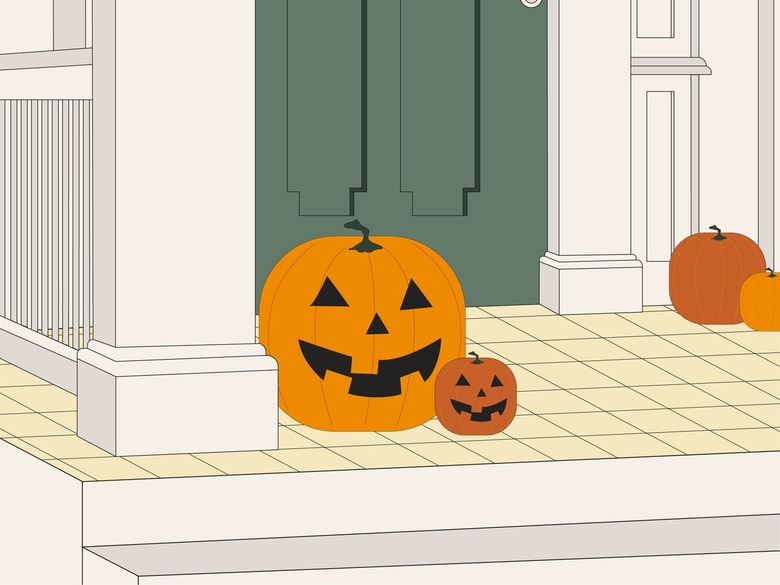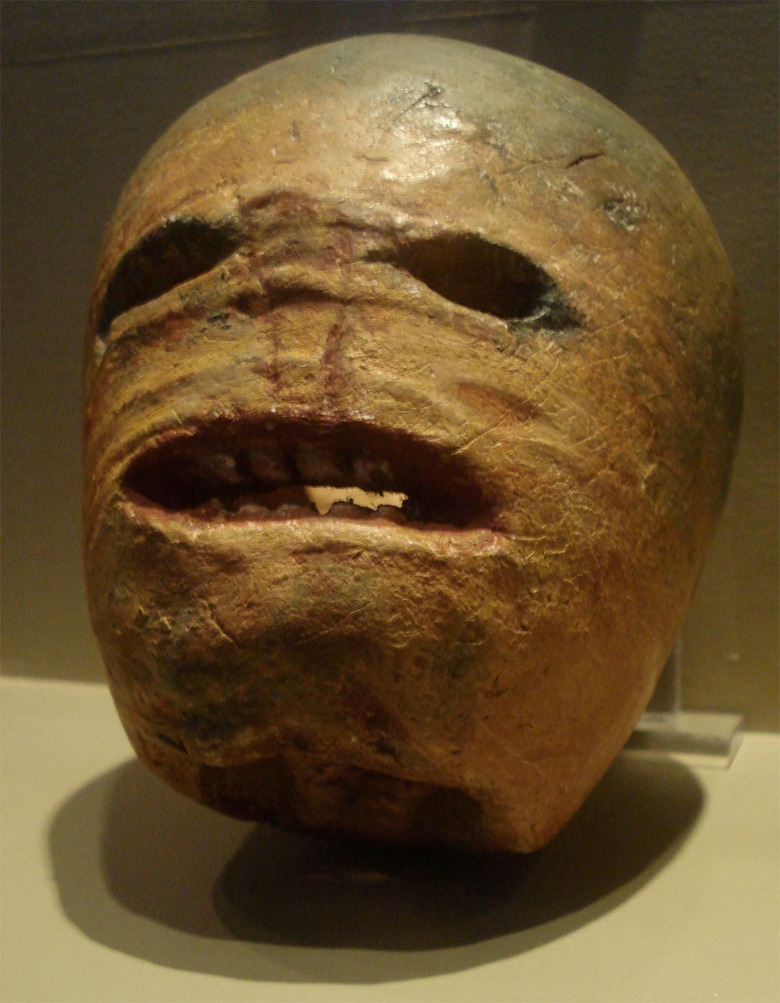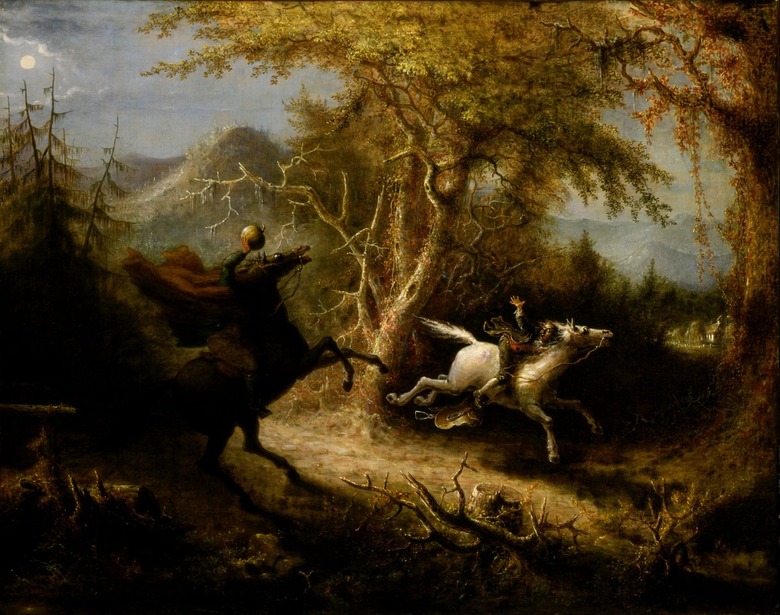The Original Jack-O'-Lantern Was Actually Terrifying
The month of October is signified by the mighty jack-o'-lantern, a plump pumpkin that is hollowed out to create a lantern that lights the way for trick-or-treaters en route to various front doors. Of course, this piece of Halloween decor would also be nothing without its signature face.
While carving jack-o'-lanterns has become a commonplace tradition, it is strange to think, "Who was the first person who decided to give a pumpkin a personality and an inner light?" As it turns out, the Devil might be to blame.
Where did jack-o'-lanterns come from?
Where did jack-o'-lanterns come from?
According to National Geographic, carving produce to resemble a human face is a DIY project that's thousands of years old. In northern European Celtic cultures, such a craft could have been used as a form of worship for a certain figure or even as a war trophy, with the face representing the severed head of your enemy.
What were the first jack-o'-lanterns made out of?
What were the first jack-o'-lanterns made out of?
Though pumpkins tend to be our jack-o'-lanterns of choice today, it's also important to remember that the pumpkin is a New World crop cultivated by Indigenous communities, according to a HortScience research article. As a result, in Europe, root vegetables like turnips, beets, and potatoes were typically used (and are decidedly more frightening).
As for when jack-o'-lanterns became associated with Halloween, it all started during the Celtic festival of Samhain. Specifically, Time reports that Samhain marked the end of the harvest season and beginning of the Celtic new year. As the inspiration for the Halloween we celebrate today, on October 31 (Samhain eve), it was believed that the dead's spirits would join the living. This, of course, was a scary idea to many, so they utilized costumes and frightening root veggie faces to ward off the souls of the dead.
While it's fun to think of the jack-o'-lantern having a 100% spooky origin story, the creation of such an item was also rooted in practicality. "Metal lanterns were quite expensive, so people would hollow out root vegetables," Nathan Mannion, the senior curator for Dublin's EPIC The Irish Emigration Museum, told National Geographic. In other words, jack-o'-lanterns were also a cheaper form of light.
Which folktale inspired the Halloween jack-o'-lantern?
Which folktale inspired the Halloween jack-o'-lantern?
In addition to "Jack" being a 17th-century British term for a man you don't know — "Jack-of-the-Lantern" was used to refer to a night watchman — the term is also closely associated with the 18th-century cautionary Irish tale of Stingy Jack. After tricking the Devil, a blacksmith named Stingy Jack was prevented from going to both Hell and Heaven, according to The Irish Place. Feeling sorry for him, the Devil gave Jack some coal to light his turnip lantern while he wandered the in-between realm forever. This also helped spread the name "Jack-of-the-Lantern" or "Jack-o'-Lantern."
Plus, there's another association with the word jack-o'-lantern. It became a way to describe the natural phenomenon ignis fatuus, in which decomposing matter located in marshland will combust and produce flickering lights. It was also known as "will-o'-the-wisp," but once the tale of Stingy Jack became popular, many believed the light was a lost soul like Jack-of-the-Lantern. Interestingly, once electricity came about, memories of Stingy Jack wandering marshes began to fade.
Who brought the jack-o'-lantern to America?
Who brought the jack-o'-lantern to America?
During the 19th and 20th centuries, Irish immigrants brought their jack-o'-lantern tradition over to America, where pumpkins were widely available for carving. It, of course, was a hit. As a result, Stingy Jack suddenly wasn't the most popular choice for a character with a carved root vegetable — instead, it was the Headless Horseman from Washington Irving's The Legend of Sleepy Hollow. Though, in the story, the Horseman merely throws a pumpkin at protagonist Ichabod Crane and doesn't actually have a jack-o'-lantern head.
Since the introduction of the jack-o'-lantern to America, we've seen the vegetable become synonymous with Halloween. Nowadays, there are even festivals and TV competition shows dedicated to the art of pumpkin carving.
From war trophies to the Devil to a natural phenomenon, the jack-o'-lantern has come to symbolize a wealth of history. And while it will always be an iconic DIY decor piece, it's nice to know where the jack-o'-lantern all began — even if its origin is a bit like pumpkin guts: all over the place.


